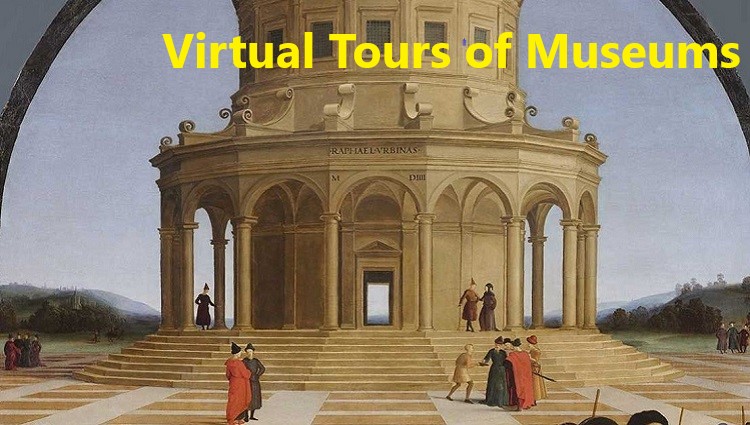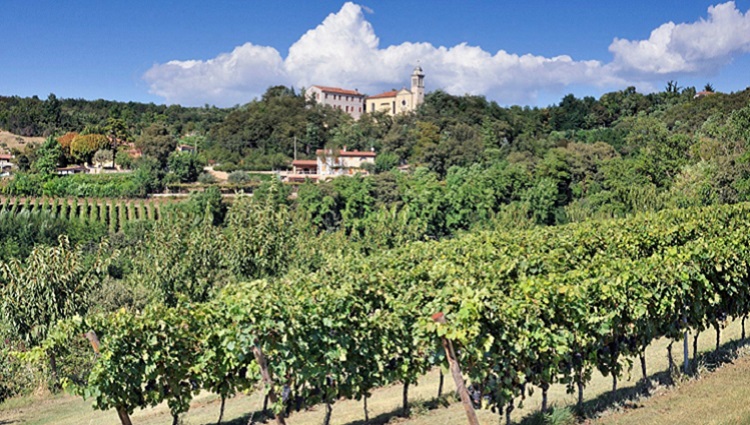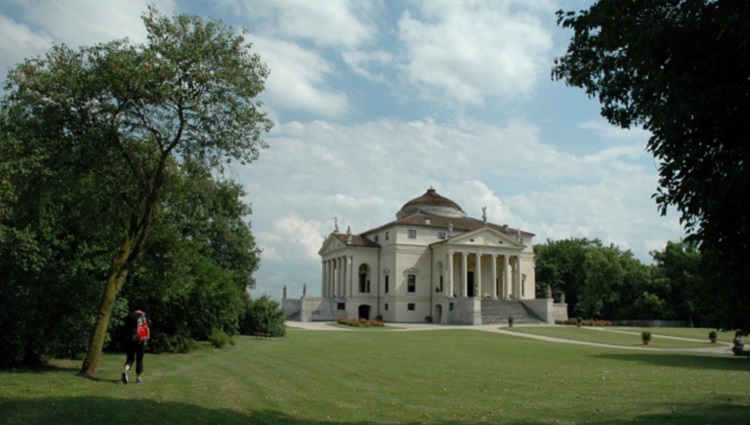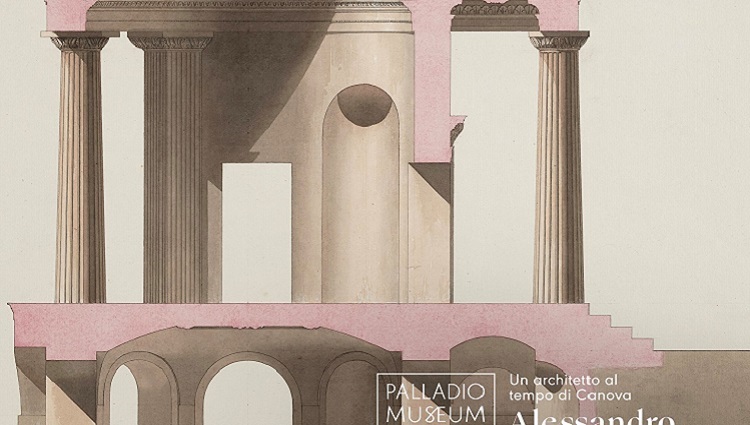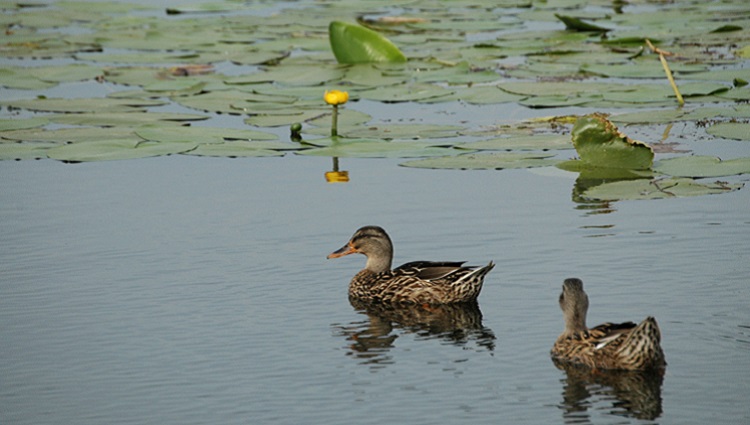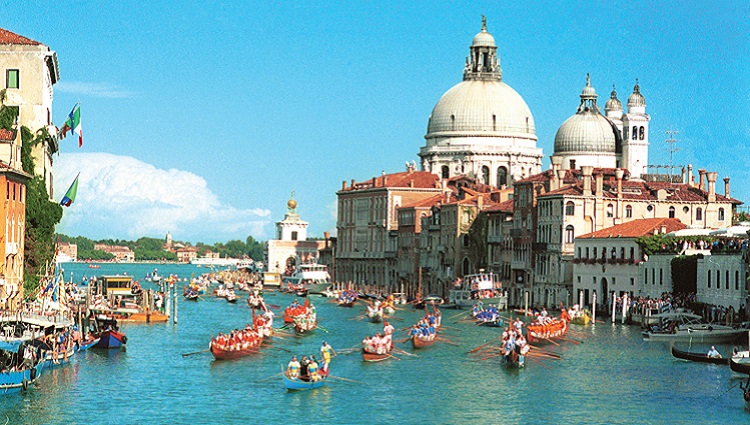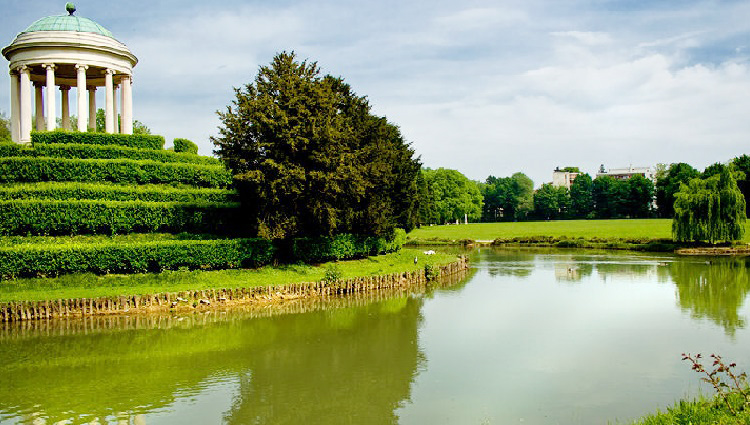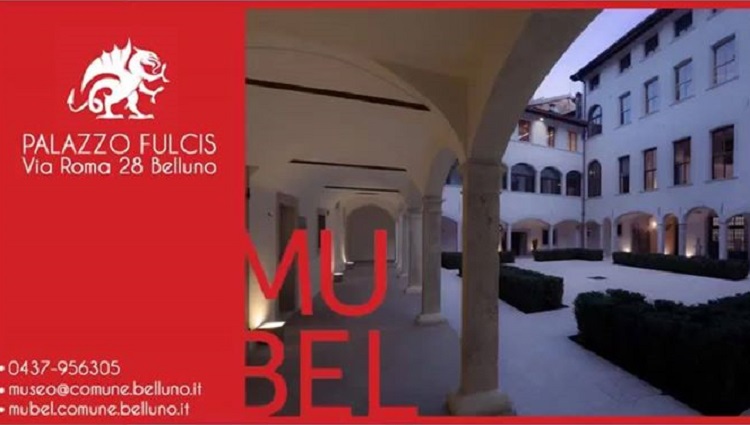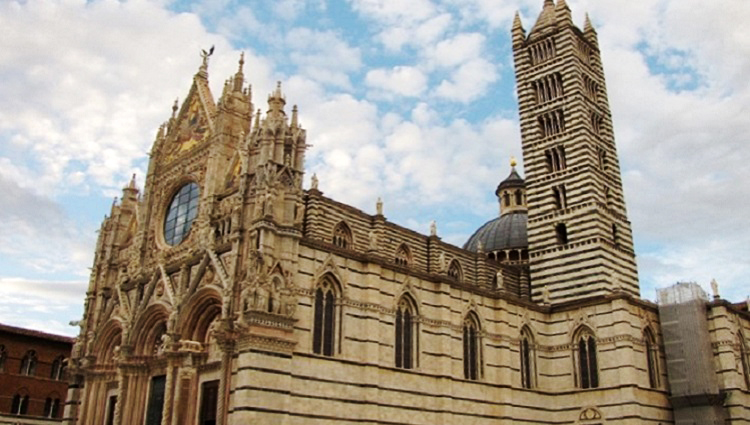Veneto & Nearby
City Parks
- Parco Querini
- Giardini Salvi
- Parco Villa Guiccioli
- Parco Colonia Bedin Aldighieri
- "Padre Uccelli" in Via Bacchiglione/Porta Santa Croce
- Oasi Valletta del Silenzio
- Parco Fornaci
People are not allowed to sit on the benches or form gatherings. Physical activity must be individual only, interpersonal distance of at least one meter must be respected, unless in the case of people accompanying minors of people with disabilities
People must wear a mask and carry hand sanitizer
Violators will be fined with a sanction from € 400 up to 3,000 pursuant to article 4 of decree-law # 19 of 25 March, 2020.
~~~~~~~~~~~~~~~~~~~~~~~~~~~~~~~~~~~~~~~~~~~~~~~~~~~~~~~~~~~~~~~~~~~~~~~~~~~~~~~~~~~
COMPRENSORIO COLLI BERICI / BERICI HILLS ⚠. The Berici Hills area offers a variety of footpaths, where natural elements and examples of rural art, monasteries, churches, villas and fountains are combined with the land. Some masterpieces by Andrea Palladio, such as La Rotonda and Villa Pojana, declared a World Heritage Site by UNESCO, were built right here in the Comprensorio dei Colli Berici, Berica Land. This area offers a number of themes which gives the opportunity for each tourist to experience something different from nature, landscape, art, history, sports, food and wine. The Consorzio Pro Loco Colli Berici website at https://www.colliberici.it/en/ provides information about possible activities in the territory, including excursions, cycling and walking routes and events, whether travelling alone, with friends or family.
Lake Fimon is one of the naturalistic places of the Berici Hills. In particular, it is a 1.5 km-long lake basin fed by underground springs, whose history dates back to the Bronze Age. In addition to the great landscape value, its importance is linked to the unique habitat, with the presence of flora and fauna typical of wetlands. It can be seen by walking or cycling. Approximately, the trail around tha lake is 5 km, about three miles. Lake Fimon may also be the starting point for a longer hike and experience the surrounding Berici Hills. There are several official and color-coded hikes starting from the lake. They vary from just under three to almost eight miles. Visit also HTTP://WWW.TURISMOTERRABERICA.IT/EN/
~~~~~~~~~~~~~~~~~~~~~~~~~~~~~~~~~~~~~~~~~~~~~~~~~~~~~~~~~~~~~~~~~~~~~~~~~~~~~~~~~~~
Open museums in Vicenza
DAYS & HOURS
Friday, Saturday and Sunday 10-18 pm
- Olympic Theatre
- St. Corona Church
- Naturalistic and Archaeological Museum
Friday, Saturday and Sunday 10-14 am & 15.15-18 pm
- Museum of Risorgimento and Resistance
Tuesday, Wednesday and Thursday 10-18 pm
- Civic Museum of Palazzo Chiericati
PALLADIO MUSEUM ⚠, Vicenza, Palazzo Barbarano, Contrà Porti 11; open Tuesday-Sunday 10 a.m.-6 p.m.; ticket museum + exhibitions € 8, free admission for children under 6 years old. The museum is fully accessible to people with physical disabilities. For information and bookings call 0444 - 323014.
LA ROTONDA ⚠; winter hours for the visit outside from 10 a.m.-noon and from 3-6 p.m. The official season starts again on Saturday March 14 with visits inside (unless new indications).
~~~~~~~~~~~~~~~~~~~~~~~~~~~~~~~~~~~~~~~~~~~~~~~~~~
Open museums in Veneto
HEMINGWAY AND THE GREAT WAR MUSEUM, Via Ca` Erizzo 19, Bassano del Grappa, about 35 km. northeast of Vicenza, is situated in Ca’ Erizzo, a 15th century villa, which underwent remodeling and later additions, just north of the Ponte Vecchio, the famous Palladian wooden bridge, on the eastern river bank. Bassano del Grappa is located at the point where the river Brenta comes out of the mountains and flows into the lowlands at the borders of Vicenza, Treviso and Padua. In the last months of World War I, the city valorously resisted repeated attacks of Austro-Hungarian troops trying to advance into the Venetian plain to destroy the Italian army.
In 1918, the villa was the seat of Section 1 of the American Red Cross ambulance units. John Dos Passos, Dudley Poore, and John Howard Lawson were among the many voluntary drivers stationed at the villa during World War I. Three months after he was wounded in Fossalta di Piave, Ernest Hemingway also stayed at Ca' Erizzo. His 1919 story “The Woppian Way” or “The Passing of Pickles McCarty” (MS 843) includes a detailed description of Ca’ Erizzo and the Arditi, the elite assault troops who were based in Bassano at the time.
Dr. Renato Luca, the present owner, renovated the villa and opened the museum with a collection of meticulously researched photographs and documents along with first editions of Ernest Hemingway in English and Italian.
It is open Tuesday-Sunday 10 a.m. - 1 p.m. and 3-6 p.m. The ticket costs €5 and €3 (reduced 6-12 years, over 65, university students under 26), free for children under 6, disabled. For information call 0424 - 529035 or email at info@villacaerizzoluca.it
http://www.museohemingway.it/eng/
PALAZZO FULCIS / CIVIC MUSEUM⚠, Via Roma 28, Belluno, about 110 km. northeast of Vicenza, reopened its doors to the public. The building is located in the central Piazza Duomo and has been a museum since 1875. It went through a restoration in 2009, and it has a rich archaelogical collection, several paintings, graphic works and sculptures on display. Open Tuesday-Wedsneday & Friday 9:30 a.m.-12:30 p.m.; 3:30-6:30 p.m.; Thursday 9:30 a.m.-12:30 p.m. & closed in the afternoon; Saturday & Sunday 10 a.m.-6:30 p.m. The ticket costs €8 and €5 (reduced), free for children under 8, disabled, Family ticket costs €12 (two adults & at least one children under 13).
In order to contain Covid-19, however, there are some new access rules to respect:
Access is only allowed with the use of the mask and after hand sanitization. Body temperature measurement may be required.
Access is allowed only for small groups (maximum 5 people) who visit the Museum together and respect the social distancing. It is recommended to buy the tickets by calling 0437 - 956305; or online ticket office at www.geticket.it; prenotazionimuseo@comune.belluno.it
~~~~~~~~~~~~~~~~~~~~~~~~~~~~~~~~~~~~~~~~~~~~~~~~~~
Open museums & exhibits in Italy
THE PEGGY GUGGENHEIM COLLECTION ⚠, Palazzo Venier dei Leoni, Venice. Due to COVID-19 measures, the collection is open Saturday and Sunday weekends, from 10 a.m. to 6 p.m. Book your visit. For information about the PGC call 041 - 240 5411 or email info@guggenheim-venice.it
~~~~~~~~~~~~~~~~~~~~~~~~~~~~~~~~~~~~~~~~~~~~~~~~~~
Virtual Tours of Museums
For those who don't want to give up being a visitor even in the time of the Coronavirus, here is the chance to admire some wonders and masterpieces.
Many museums offer some free virtual tours without leaving the house, while waiting to experience them in person. They include the Egyptian Museum of Turin; the Brera Pinacoteque in Milan, which allows you to admire the masterpieces of world art history up close, thanks to high definition that goes beyond what the human eye perceives; the Uffizi Gallery in Florence also offers high-definition images of the paintings of virtual exhibitions, from Botticelli to Cimabue; the Prado Museum in Madrid; the British Museum in London and the Louvre Museum in Paris, which offers a 360-degree view not only of the museum's exhibition galleries, but also of the square and the external facade of the museum, including its famous glass pyramid.
Also, thanks to Google Art Project, the Moma collection, the Metropolitan Museum in New York, can be visited just like a multimedia gallery. The algorithms developed by Google have made it possible to examine and label not only the works of art but also the photographs and digital works exhibited in the New York gallery. An incredible barrier-free vehicle that allows you to explore the 60 best museums in the world also through Street View.
Here are some links to enjoy art and sites while waiting to see them in person!
https://cdn-cache.museoegizio.it/static/virtual/ArcheologiaInvisibileITA/index.html
https://pinacotecabrera.org/en/collezioni/the-collection-online/
https://www.uffizi.it/en/online-exhibitions
https://www.museodelprado.es/en/the-collection/art-works
https://www.britishmuseum.org/collection
https://www.louvre.fr/en/visites-en-ligne
https://artsandculture.google.com/project/wonders-of-italy
https://artsandculture.google.com/usergallery/PALiGxSLVM26Iw
More information on the Italian Ministry of Cultural Heritage website at: https://www.beniculturali.it/mibac/export/MiBAC/index.html#&panel1-1
Virtual Tours of UNESCO World Heritage Sites
Planning future activities, which may include trips, can help make use of your time while staying at home.
Knowing a little more about future destinations will give you the chance to get to better know different sites and their history before visiting them.
There are many unique sites in the world and since 1972 the United Nations Educational, Scientific and Cultural Organization (UNESCO) adopted the Convention Concerning the Protection of the World Cultural and Natural Heritage, and stated that the organization is the official designator of these sites.
They are identified according to precise criteria, areas, zones and places containing unique characteristics, of particular importance in regards to culture, archaeology, environment or landscape. Renewed efforts by the Institutes to preserve these sites include the call to everyone to get to know them better.
Italy has the largest number of UNESCO World Heritage Sites in the globe. Of the 55 sites, 50 are cultural and 5 are natural.
Discovering a little more about these sites and experiencing virtual tours in English is possible by visiting https://whc.unesco.org/en/list/ , by selecting the specific site and then “Video” (on the same link you can find UNESCO sites worldwide).
(A World Heritage Site is a place that is listed by the https://en.wikipedia.org/wiki/UNESCO)
Keeping Perspective in Trying Times
Balancing work and personal life can be stressful, but add a global pandemic to the mix, and it is easy to feel afraid, sad, angry, annoyed or depressed. If you are feeling overwhelmed, try to step back and look at the big picture. Nothing lasts forever and things will eventually feel normal again.
Positive Directions:
• Smile: It may seem cheesy, but there is a proven link between facial expressions and mood.
• Take a break: Take time away from the 24-7 news cycle, work email and social media – GET OFFLINE!
• Exercise Physical movement releases endorphins and increases feelings of happiness.
• Connect Call, write or video-chat with a friend – chances are it will brighten their day too! Spend time with your (healthy) loved ones at post – game night, watch a movie together or eating a meal together can promote positive feelings.
• Prioritize self-care Do something for yourself so that you can continue to help others.
• HAVE FUN! There is no rule against having fun in a crisis! Sometimes a good laugh, a funny movie, a video game tournament, pillow fight or other game, craft or hobby is just the right medicine
Enhancing Family Resilience
Family Resilience
Foreign affairs families often face a variety of unique challenges that can erode resilience. Family resilience is the ability of a family to bounce back and adapt together through shared activities. The goal is to build strength and integrity.
For resilience training at your post or office, email CEFAR at FSITCResilience@state.gov
State employees can subscribe to FSI’s resilience blog at http://cas.state.gov/fosteringresilience ⚠
Activities That Enhance Family Resilience
- Communicate: Share substantive information and have intentional dialogue with one another. Talk about what matters within the family and make important decisions together. Make time to listen and focus on each other
- Eat dinners together: Prepare a simple meal, and sit together as a family. Turn off the television or smartphones during shared meals. Spend the meal talking about your days and learning more about one another to foster communication and trust.
- Share with each other: Talk to each other about both happy and challenging events in your family history. Make a list of family goals to help you get excited about your new post, and talk about what you miss from your old city or country.
- Celebrate together: Along with traditional holidays, celebrate any special family days. Collect holidays from each culture to help you appreciate your new home and create exciting memories.
- Volunteer together: Donating materials or time as a family teaches children community engagement and the value of service to others. Helping other people improves resilience.
- Get active: Play sports or games, create a scavenger hunt at home. Find ways to explore your new city and country (virtual tours).
- Do mindfulness activities: Mindfulness activities help to rewire, heal, and rest the brain. Meditation, hobbies, and practicing yoga are all ways to improve your emotional wellbeing.
Where to Get Additional Support
· If you are experiencing characteristics of severe low resilience that last for long periods of time, or they interfere with your normal functioning, seek help through MED Employee Consultative Services (ECS), your agency’s staff care office, primary health care provider, or mental health professional. Email: MEDECS@state.gov.
- WorkLife4You is a comprehensive and confidential resource and referral service that assists employees who are searching for ways to balance their professional and personal lives. The State Department has contracted with Federal Occupational Health (FOH) to offer this benefit at no cost to all direct-hire civil service and foreign service Department employees, (fulltime, part-time, permanent or temporary), overseas Family Member Appointees, and their family members. Email: Specialist@LifeCare.com or log on to the FOH website WorkLife4You.com ⚠
U. S. DEPARTMENT OF STATE Foreign Service Institute’s Transition Center Center of Excellence in Foreign Affairs Resilience
Adapted from: Veneto Views, Issue 2020-16, U.S. Department of State Tri-Mission Rome.
~~~~~~~~~~~~~~~~~~~~~~~~~~~~~~~~~~~~~~~~~~~~~~~~~~~~~~~~~~~~~~~~~~~~~~~~~~~~~~~~~~~~
Tuscany
UNESCO World Heritage Sites in Italy
HISTORIC CENTER OF SIENA:
Siena, city of art, city of culture, city of the Palio, university city and city of excellent cuisine – no doubt that this gorgeous town is a multifaceted one. Nestled within the Tuscan hills, Siena has long maintained its lovely and unique appearance, as it does today. The Historic Center of Siena is inscribed in the UNESCO World Heritage Sites list since 1995. Historically, its inhabitants pursued their competition with the neighboring cities of Florence and Pisa right into the area of urban planning. Throughout the centuries, the city has preserved its Gothic appearance acquired between the 12th and 15th centuries. The whole city of Siena was devised as a work of art that blends into the surrounding landscape.
Saena Julia was what the Emperor Augustus originally named Siena when it was founded as a Roman colony – although the Etruscans settled it long before the Romans. This Tuscan city developed on three hills connected by three major streets forming a Y-shape and intersecting in a valley that became the Piazza del Campo. The seven-kilometer long fortified wall still surrounds the 170-hectare site. Inside the walls towerhouses, palaces, churches and other religious structures survive. Also of note are the city’s fountains that continue to be fed by an extensive system of original tunnels.
Oddly, it was during times of war with Florence that the the city experienced its best years; that is because it was precisely in those years that great artists had the opportunity to realize important works. Think Duccio di Boninsegna, Simone Martini and the Lorenzetti brothers, the masters of the Sienese school, who influenced the course of Italian and, more broadly, European art. Siena was adorned with marvelous new monuments during that period – these included its Duomo, the Palazzo Pubblico and the Torre (Tower) del Mangia.
If one wants to describe Siena, it is mandatory to first mention Piazza del Campo, the city’s main piazza where the Palio (horse race) takes place. Piazza del Campo traces a trapezoidal form and slowly descends from edge to center, eventually running into the Fonte Gaia. Also fronting the Piazza are imposing buildings the likes of Palazzo Sansedoni and Palazzo Pubblico. Peering at the Piazza from a height of 345 ft is the Torre del Mangia that dates back to the 1440s; the Tower is equal in measure to the Duomo's Bell Tower. Together the two perfectly symbolize the balance between earthly and divine power. At the Tower’s feet stands the Chapel of the Virgin, a marble tabernacle with exquisite sculptures inserted into its Gothic niches. Yes, all this lies in just one piazza.
Yet, it is not Piazza del Campo alone that makes the city: Siena in in its whole is a succession of Churches – like that of San Domenico and of Santa Maria dei Servi – of narrow streets full of stores and artisan workshops offering local products and Siena’s famous treats to taste - including cantucci accompanied by a glass of Vin Santo.
Siena and the Palio: The Sienese passion for the Palio transcends any notion of mere athletic competition. The event is so strongly-intertwined with citizen life here that it is hard to fully comprehend for those not born in Siena. Siena is divided into 17 contrade, or residential quarters, ten of which participate in the race, by way of a horse chosen at random. An Historical Procession takes place before the Palio, with more than 600 people in costume taking part. The Palio is a horse race (bareback) three times around the Piazza del Campo (annually, July 2 and Aug. 16). This year the city council has voted to cancel the 2020 edition - for the first time since World War II - due to the health risk associated with large numbers of people gathering in the era of COVID-19 and social distancing. However, even with no Palio, do not miss the chance to visit Siena, wander among its tiny lanes and the ample central piazza where Siena’s true heart beats – a young, though ancient city, monumental in all its vivacity.
References: https://whc.unesco.org/en/list/717
Adapted from: Veneto Views, Issue 2020-22, U.S. Department of State Tri-Mission Rome.
~~~~~~~~~~~~~~~~~~~~~~~~~~~~~~~~~~~~~~~~~~~~~~~~~~~~~~~~~~~~~~~~~~~~~~~~~~~~~~~~~~~
Find events for Tuscany at:






